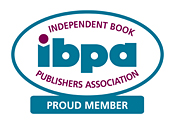I’m very excited. I’ve figured out how to make the sometimes revered, sometimes scorned, always discussed writer’s tool work for me. You know the one – the outline. I’d only begun using it because my editor advised that it was the next step for revising the story he’d critiqued. Now I’m outlining because it is in such harmony with the way I think. For me, it’s the difference between merely writing, and writing the best that I can. I like that there is no strict definition of what a story outline is. I’m structuring mine to be a combination of narrative and storyboard. I get to ‘pants’ within the structure of ‘plotting’. Best of both worlds. 😀
Does that mean I’ve abandoned the silkscreening idea? Not at all. But in silkscreening, the colors are applied to a medium – cloth, a canvas, what have you. What I’m doing with outlining is separating out the threads so I can see each individual one. Then I’ll ‘weave’ them back together in the most entertaining way that I can before layering the story with ‘color’.
Why has outlining become so important to me? I began this journey with several stories – in my head and bits of them written down. The stories are related, spanning a family for generations. I thought I could just unravel a thread from the jumble and make a novel of it, keeping track of the relationships among the stories in my head. Stupid, stupid, stupid – complete with the bruises on my forehead from banging my head on the desk. What I ended up with was a very complicated story with bumps and lumps where the current work arced into as yet unwritten stories. To get rid of lumps and bumps, I wrote short narratives of each of the stories. They now form the appendix of my outline. If I can create allusions for them, great. If not, that’s fine too. After all, they are not a part of the current book. Very quickly, I’ve found that having those narratives works both ways – I can quickly add something that comes up in the current novel to the appropriate future story narrative.
Once the story arcs were clearly defined and separated from the story, the plot jumped out at me. I knew it was there, I wrote as though it was there, but – as pointed out by my editor – for the reader, it was very difficult to see. Now, not only do I see one plot, I see two! Then quickly I realized that to be clear to the reader, I should only have one primary plot. The other one I chose to make a secondary plot. They are both still clear, but I needed to choose what type of story I’m telling. Making the action plot secondary tilts the story toward romance. Making the romantic plot secondary tilts it toward romantic suspense – and I want romantic suspense. Secondary does not mean lesser – I think the romance is still pretty hot. I’m using primary and secondary to mean that the action (primary) is what drives the story.
Even after all of that simplification, I’m still left with a fairly complex novel. The action plot line has five subplots; the romance plot line with four – one more each than I tweeted about. So far in the outline, I’ve got the story narrative statement and I’m working on the narrative statements and structure points for each plot and subplot. My next step will be to complete the narrative statements for each character and how he or she is involved in each subplot. I expect to have completed all that within the next week or two, but let’s see where I am next week. It may seem that I’m working at a fast pace, but not really. It’s that I already have a story and am outlining in the revision step. Yes I know. I’m finally putting the cart behind the horse – where it belongs.
Any guesses on how long revision on a four hundred page manuscript will take me?
Are you an outliner? Plotter? Pantser?



The most useful aspect of outlining for me is that it sets out how much meat is actually on the bones of the story. I may want to go for 120,000 words, but if I don’t have enough meaningful action, revelation and other content, it’ll more than likely bore my readers. Sketching out a plot in advance also gives me a better idea of how to shape the prose, seeding things or crossing story paths so that characters can support each others events. I don’t like scripting too heavily, preferring to let the characters grow organically, but having some idea of destinations for a chapter or section is invaluable. Most of my best work has had some outline in advance.
The other best pieces of my work had none at all, though. Oy.
Thanks for sharing your thoughts, John.